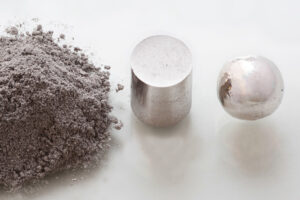Rhodium replating is a technique commonly used in the jewelry industry to restore and rejuvenate the appearance of rhodium-plated pieces. If you own rhodium-plated jewelry or are considering getting it, here are five important things you should know about rhodium replating
1. Understanding Rhodium Plating
Before diving into rhodium replating, it’s essential to understand the concept of rhodium plating itself. Rhodium plating involves depositing a thin layer of rhodium, a rare and precious metal, onto the surface of jewelry pieces. This plating enhances their appearance, provides a lustrous white finish, and offers protection against tarnishing and scratches.
Rhodium plating is a common process used in the jewelry industry to enhance the appearance and durability of certain metals, particularly white gold. It involves applying a thin layer of rhodium, a rare and precious metal from the platinum family, onto the surface of the jewelry item. This plating can greatly improve the overall look of the piece by giving it a bright, shiny, and reflective finish.
One of the main reasons for rhodium plating is to create a uniform color for white gold jewelry. Natural white gold has a slight yellowish tint, which can be masked by applying a layer of rhodium. This gives the jewelry a pure white appearance, similar to platinum. Rhodium plating also provides a protective barrier for the underlying metal, preventing it from tarnishing or corroding over time. This helps to maintain the beauty and longevity of the piece.
It is important to note that rhodium plating is not permanent and may wear off over time, especially with daily wear or exposure to chemicals. However, it can be easily re-plated to restore its original luster. It is recommended to have rhodium-plated jewelry professionally cleaned and re-plated periodically to maintain its shine.
2. The Need for Rhodium Replating
Rhodium replating is a process that involves applying a thin layer of rhodium onto a base metal, typically silver or white gold. This process is commonly used in jewelry to enhance its appearance and provide durability. Rhodium is a precious metal that is known for its brilliant white color and resistance to tarnish.
One of the main reasons for rhodium replating is to restore the original luster and shine of the jewelry. Over time, the rhodium plating on a piece of jewelry can wear off, exposing the base metal underneath. This can result in a dull and less attractive appearance. By replating the jewelry with rhodium, it can regain its original sparkle and beauty.
Another important reason for rhodium replating is to provide protection to the underlying metal. Rhodium is highly resistant to corrosion and tarnish, making it an ideal protective coating for jewelry. It forms a barrier between the metal and external elements, preventing damage from moisture, chemicals, and everyday wear and tear.
Furthermore, rhodium replating can also extend the lifespan of the jewelry. By adding a layer of rhodium, the underlying metal is shielded from scratches and abrasions, helping to maintain its original condition for a longer period of time.
Signs That Rhodium Replating is Required
Rhodium replating is a process that involves applying a thin layer of rhodium onto the surface of an object, typically made of white gold or silver. Rhodium is a precious metal that is known for its durability, resistance to corrosion, and shiny appearance. Over time, however, the rhodium plating on jewelry or other objects may wear off, revealing the underlying metal. Here are some signs that indicate rhodium replating is required:
Discoloration
One of the most common signs that rhodium replating is needed is when the object starts to show signs of discoloration. For example, white gold jewelry may start to appear yellowish or silver objects may lose their shine and become dull.
Visible scratches
Another indication that rhodium replating is necessary is when there are visible scratches on the surface of the object. These scratches can be caused by everyday wear and tear or by accidental bumps and knocks. Rhodium replating can help to restore the smooth and shiny surface of the object.
Allergic reactions
Some individuals may develop allergic reactions to certain metals, including the ones used in jewelry. If you notice that wearing a particular piece of jewelry causes skin irritation, redness, or itchiness, it could be a sign that the rhodium plating has worn off and the underlying metal is coming into direct contact with your skin.
Fading color
Rhodium plating is often used to enhance the color of gemstones or to provide a contrasting background for diamonds. If you notice that the color of your gemstones or the brilliance of your diamonds is fading, it could be an indication that the rhodium plating needs to be reapplied.
Uneven appearance
When the rhodium plating wears off, the object may have an uneven appearance, with some areas appearing brighter or darker than others. This can detract from the overall aesthetic appeal of the object and may require rhodium replating to restore its uniform shine.
The Rhodium Replating Process
The Rhodium Replating Process is a crucial step in maintaining the beauty and durability of jewelry. Rhodium, a precious metal from the platinum family, is used to plate jewelry items such as rings, necklaces, and bracelets. This process involves applying a thin layer of rhodium onto the surface of the jewelry piece to enhance its appearance and protect it from wear and tear.
The first step in the Rhodium Replating Process is to clean the jewelry thoroughly. Any dirt, oil, or residue must be removed from the surface to ensure a proper bond between the rhodium and the metal. This is typically done by using a mild detergent or an ultrasonic cleaner.
Once the jewelry is clean, the next step is to prepare the rhodium solution. Rhodium plating solutions are typically made by dissolving rhodium powder in a mixture of water and other chemicals. The concentration of the solution may vary depending on the desired thickness of the rhodium layer.
After preparing the solution, the jewelry is carefully immersed in the rhodium bath. An electric current is passed through the solution, causing the rhodium ions to bond with the surface of the jewelry. This electroplating process allows for a uniform and durable coating.
Duration of the Plating Process
The duration of the plating process depends on the desired thickness of the rhodium layer and the type of jewelry being plated. It can range from a few minutes to several hours. During this time, the jewelry piece is periodically checked to ensure an even coating and to avoid over-plating.
Once the desired thickness is achieved, the jewelry is removed from the rhodium bath and rinsed thoroughly to remove any excess solution. It is then dried and polished to bring out its lustrous shine.
The Rhodium Replating Process not only enhances the appearance of jewelry but also provides protection against tarnishing and scratches. Rhodium is highly resistant to corrosion, making it an ideal choice for plating precious metals like silver and white gold.
Benefits and Considerations
Benefits of Rhodium Replating
- Enhanced Appearance: Rhodium has a brilliant white color and a reflective surface, giving jewelry a lustrous and polished look. Replating with rhodium can restore the original shine and brightness of worn-out pieces.
- Scratch Resistance: Rhodium is a hard metal that can provide an additional layer of protection against scratches and wear. This makes replated jewelry less prone to damage and maintains its beauty over time.
- Hypoallergenic Properties: Rhodium is hypoallergenic, making it an excellent choice for individuals with sensitive skin or metal allergies. Replating jewelry with rhodium creates a barrier between the skin and the underlying metal, reducing the risk of irritation.
Considerations of Rhodium Replating
- Cost: Rhodium is a rare and precious metal, which makes the replating process relatively expensive compared to other options. The cost may vary depending on the size and complexity of the item being replated.
- Maintenance: Rhodium plating is not permanent and may wear off over time, especially on frequently worn jewelry like rings. Regular maintenance and periodic replating may be required to keep the piece looking its best.
- Thickness: The thickness of the rhodium layer can affect the longevity of the replating. A thicker layer provides more durability but may alter the appearance of delicate or intricate designs.
How can I make Rhodium plating last longer?
Rhodium plating is bound to wear off after a while, but there are some steps you can take to make it last as long as possible.
- Avoid rubbing the plating on your rhodium ring.
- Avoid exposing your jewelry to harsh chemicals. Always take off your jewelry when dealing with chemicals or wear rubber gloves to protect your rings.
- Take your rhodium jewelry off when swimming in heavily chlorinated pools as the chlorine can damage the plating.
- Perfumes and cosmetics can also affect rhodium plating. Avoid contact with these and wipe away any residue if it does come into contact.
What is the cost of Rhodium plating?
Because rhodium is very rare and expensive, plating is somewhat costly. Replating a white gold ring can cost around $100, but rhodium prices vary based on the quality of the rhodium, the jeweler’s skills, and the size of the jewelry.
The issue many people have with rhodium plating is that it is an ongoing cost that adds up significantly over time.
To avoid this, you may wish to choose an already white lustrous metal that doesn’t require plating, such as platinum, as it is lustrous and silver-hued on its own. However, note that there are always maintenance costs involved regardless of the metal you choose. Even platinum tends to acquire scratches and scuff marks and requires periodic polishing.
Rhodium Plating Jobs
Rhodium plating jobs involve the application of a thin layer of rhodium onto a metal surface, usually silver or gold, to enhance its appearance and protect it from tarnishing. These jobs require precision, attention to detail, and knowledge of the plating process. Rhodium plating is commonly used in jewelry making to create a shiny and durable finish. You can prepare your resume in professional way, highlighting your skills and objectives. This will help you ace your interview. These jobs are highly technical and having apprenticeship or diploma courses will help you getting the job.
Final Thoughts
In conclusion, rhodium replating is a valuable service in the world of jewelry that allows you to restore the beauty and durability of your rhodium-plated pieces. By understanding the process and knowing when to seek replating, you can ensure that your jewelry continues to shine for years to come.






